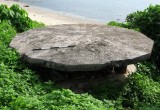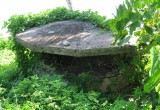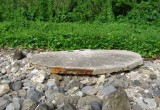World War II Observation Posts Nominated for U.S. National Register of Historic Places
Archaeologist nominates World War II military observation posts at Poloa, a village in American Samoa, for the U.S. National Register of Historic Places.
Online, October 30, 2012 (Newswire.com) - Territorial Archaeologist of American Samoa, Dr. Joel Klenck, nominated World War II structures at Poloa in American Samoa to the U.S. National Register of Historic Places. The features at Poloa resemble World War II "observation posts" first described by archaeologist Joseph Kennedy. The Poloa constructions possess thinner concrete covers, walls, and stanchions compared to most coastal defensive fortifications in American Samoa.
This nomination was a result of an archaeological survey to comply with the National Historic Preservation Act of 1966. The Act requires that all federally funded projects take historic and archaeological sites into account by recording and avoiding damage to those sites whenever possible. The American Samoa Coastal Zone Management Act of 1990 also requires that construction projects in Territory be conducted in a manner to protect historic, cultural, and archaeological sites.
David Herdrich, the Director of the Historic Preservation Office in American Samoa, states, "The coastal fortifications at Poloa are interesting and reveal an expanded range of designs in World War II defensive structures. The fortifications at Poloa add to our growing list of historic places in American Samoa, which were built during World War II."
The gracile designs of the fortifications at Poloa might indicate defense-in-depth tactical considerations by Marine Corps units. Director Herdrich adds, "The Marine Corps wrote very detailed tactical plans to prepare for an invasion into the interior of the island. Their objective was to stop an invasion at the coast and, if this method failed, to channelize attacking units into areas organized in depth and capable of withstanding attacks from any direction. Unfortunately, maps showing the locations of some of these fortifications were not preserved in military archives."
Three more rectangular concrete structures were photographed on the ridge above Poloa in the early 1990s and were surveyed this year. Joel Klenck concludes, "That there were additional fortifications behind the initial three coastal structures at Poloa suggests the U.S. Marines employed defense-in-depth tactics at Poloa and might explain why these shoreline fortifications were thinner compared to most World War II military constructions along the coasts on Tutuila Island."
By Florence Aetonu-Teo, American Samoa Historic Preservation Office.




